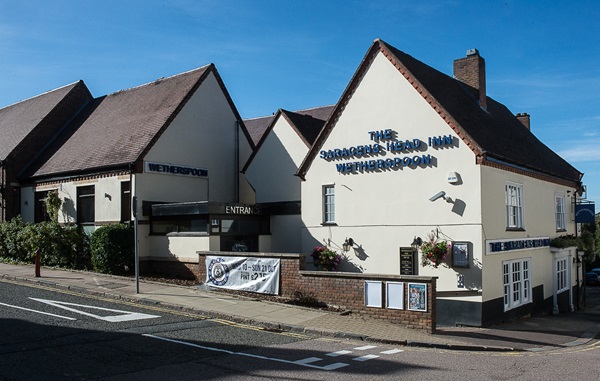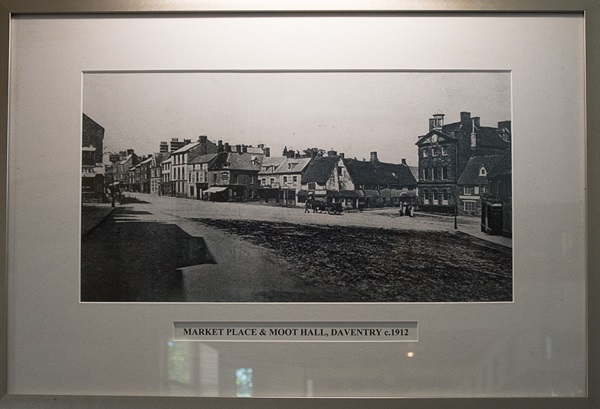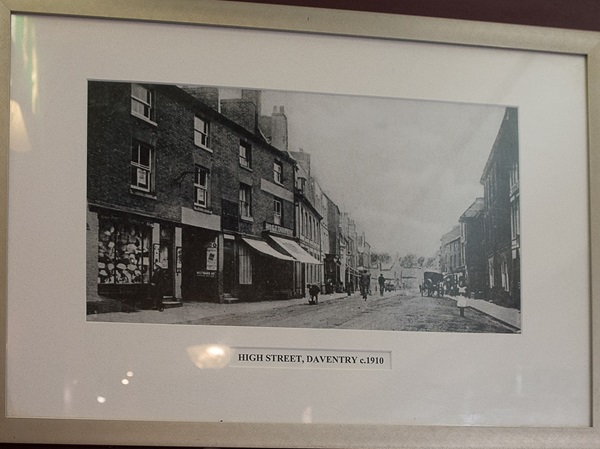Pub history
The Saracens Head Inn
Read about the famous ‘Daventry calling’.
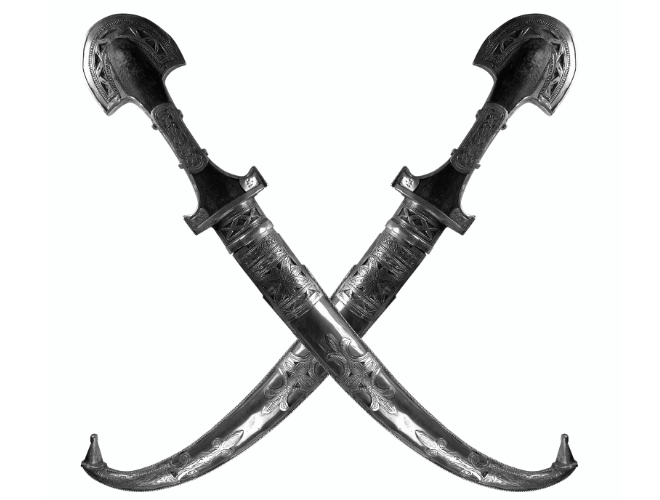
Sited at the corner of Brook Street and High Street, this pub comprises The Saracens Head and stables to the rear. The building is dated by English Heritage as mid 18th century, since when it has been called The Saracens Head. An earlier Saracens Head had been on this site from at least the early 17th century.
Photographs and text about ‘Daventry calling’
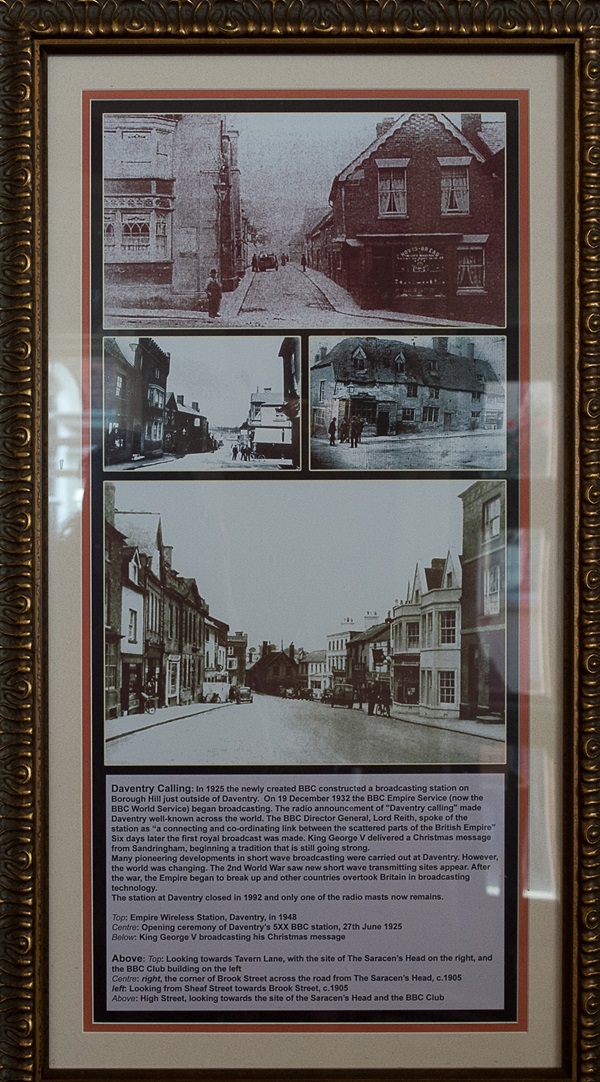
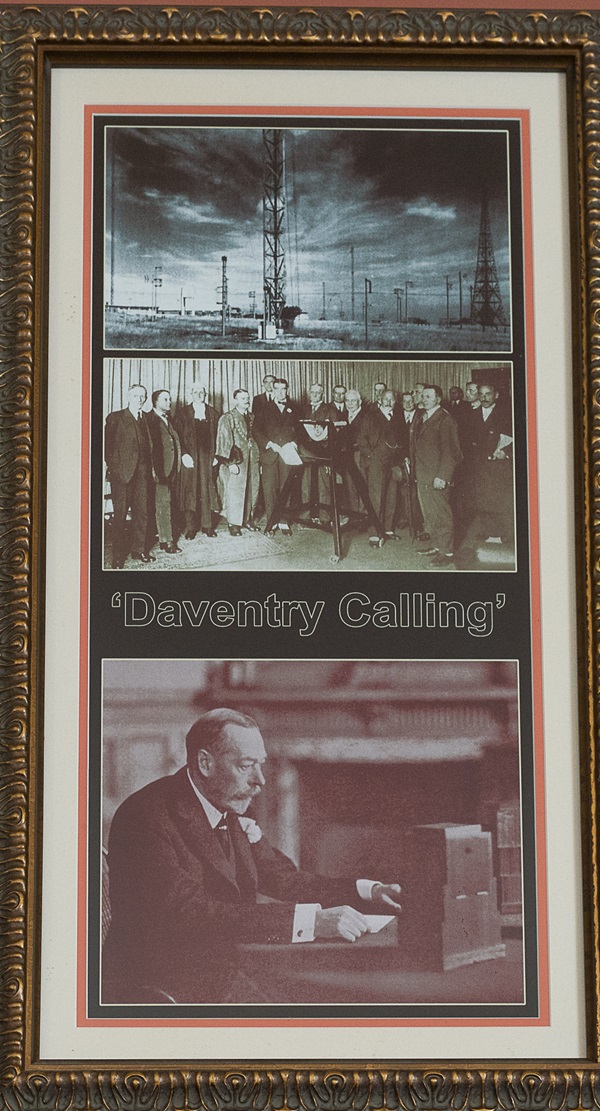
The text reads: In 1925, the newly created BBC constructed a broadcasting station on Borough Hill just outside of Daventry. On 19 December 1932, the BBC Empire Service (now the BBC World Service) began broadcasting. The radio announcement of “Daventry calling” made Daventry well known across the world. The BBC Director General, Lord Reith, spoke of the station as “a connecting and co-ordinating link between the scattered parts of the British Empire”. Six days later, the first royal broadcast was made. King George V delivered a Christmas message from Sandringham, beginning a tradition that is still going strong.
Many pioneering developments in shortwave broadcasting were carried out at Daventry. However, the world was changing. The Second World War saw new shortwave transmitting sites appear. After the war, the Empire began to break up, and other countries overtook Britain in broadcasting technology.
The station at Daventry closed in 1992, and only one of the radio masts now remains.
Top: Empire Wireless Station, Daventry, in 1948
Centre: Opening ceremony of Daventry’s 5XX BBC station, 27 June 1925
Below: King George V broadcasting his last Christmas message
Above
Top: Looking towards Tavern Lane, with the site of The Saracen’s Head on the right and the BBC Club building on the left
Centre, right: The corner of Brook Street across the road from The Saracen’s Head, c1905
Centre, left: Looking from Sheaf Street towards Brook Street, c1905
Above: High Street, looking towards the site of The Saracen’s Head and the BBC Club
Illustrations and text about the Battle of Naseby
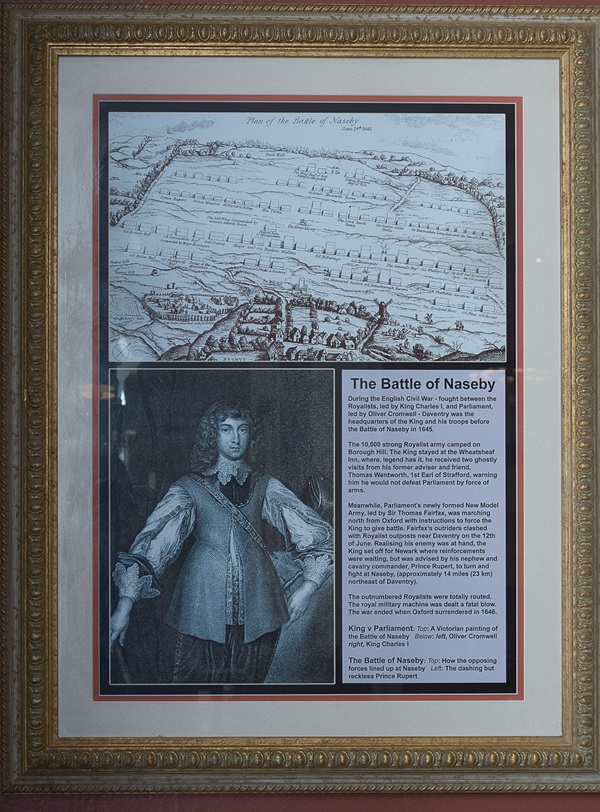
The text reads: During the English Civil War – fought between the Royalists, led by King Charles I, and Parliament, led by Oliver Cromwell – Daventry was the headquarters of the King and his troops before the Battle of Naseby in 1645.
The 10,000-strong Royalist army camped on Borough Hill. The King stayed at the Wheatsheaf Inn, where, legend has it, he received two ghostly visits from his former adviser and friend Thomas Wentworth, 1st Earl of Strafford, warning him he would not defeat Parliament by force of arms.
Meanwhile, Parliament’s newly formed New Model Army, led by Sir Thomas Fairfax, was marching north from Oxford with instructions to force the King to give battle. Fairfax’s outriders clashed with Royalist outposts near Daventry on 12 June. Realising his enemy was at hand, the King set off for Newark, where reinforcements were waiting, but was advised by his nephew and cavalry commander, Prince Rupert, to turn and fight at Naseby, (approximately 14 miles northeast of Daventry).
The outnumbered Royalists were totally routed. The royal military machine was dealt a fatal blow. The war ended when Oxford surrendered in 1646.
King v Parliament
Top: A Victorian painting of the Battle of Naseby
Below, left: Oliver Cromwell
Below, right: King Charles I
The Battle of Naseby
Top: How the opposing forces lined up at Naseby
Left: The dashing but reckless Prince Rupert.
A photograph and text about Daventry’s history
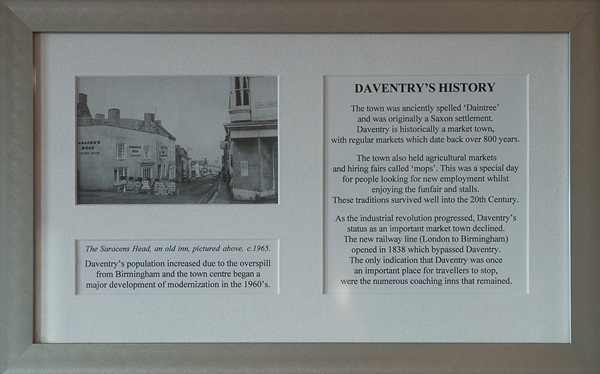
The text reads: The town was anciently spelled ‘Daintree’ and was originally a Saxon settlement. Daventry is historically a market town, with regular markets which date back over 800 years.
The town also held agricultural markets and hiring fairs called ‘mops’. This was a special day for people looking for new employment whilst enjoying the funfair and stalls. These traditions survived well into the 20th century.
As the Industrial Revolution progressed, Daventry’s status as an important market town declined. The new railway line (London to Birmingham) opened in 1838 and bypassed Daventry. The only indication that Daventry was once an important place for travellers to stop were the numerous coaching inns that remained.
Daventry’s population increased due to the overspill from Birmingham, and the town centre began a major development of modernisation in the 1960s.
Photographs of Moot Hall
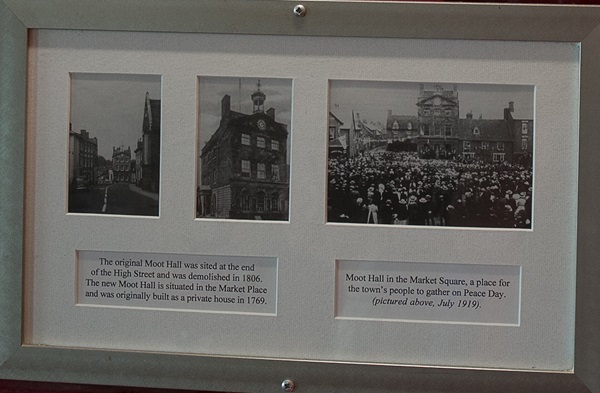
Left and centre: The original Moot Hall was sited at the end of the High Street and was demolished in 1806. The new Moot Hall is situated in the Market Place and was originally built as a private house in 1769.
Right: Moot Hall in the Market Square, a place for the town’s people to gather on Peace Day (pictured above, July 1919).
An ariel view of the town centre in the 1950s, and a map showing the town in 1900
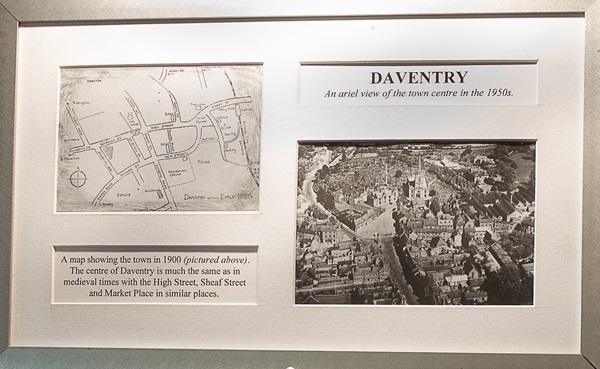
The text reads: A map showing the town in 1900 (pictured above). The centre of Daventry is much the same as in medieval times with High Street, Sheaf Street and Market Place in similar places.
Photographs of Market Square
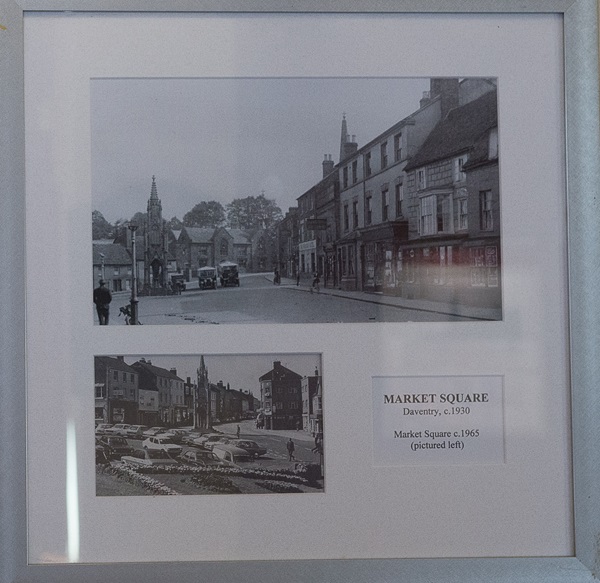
Top: Daventry, c1930
Left: Market Square, c1965
A photograph of Market Place and Moot Hall, Daventry, c1912
A photograph of High Street, Daventry, c1910
External photograph of the building – main entrance
